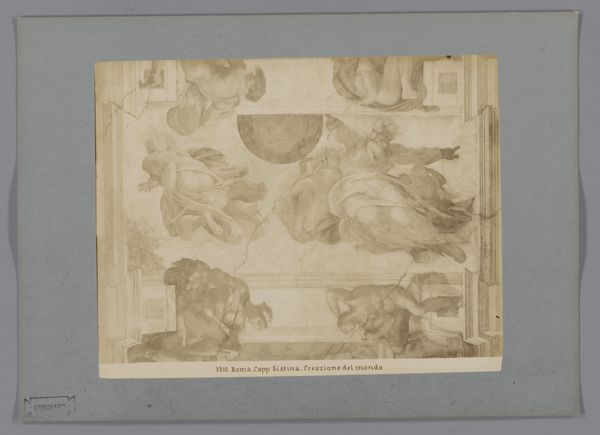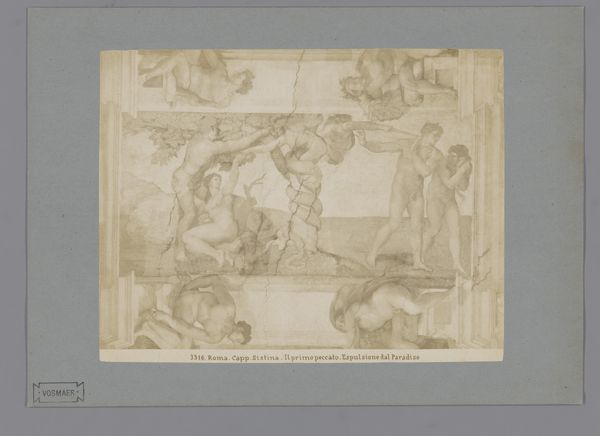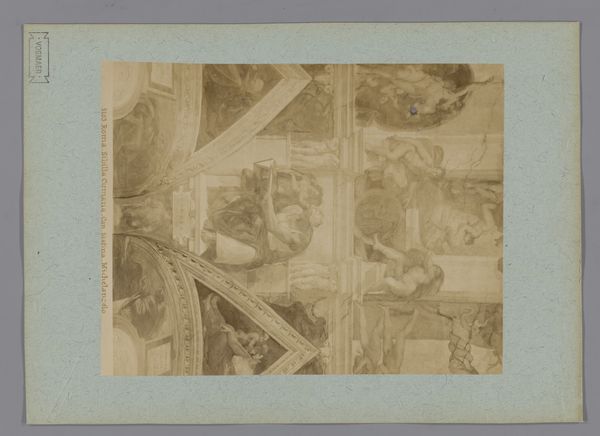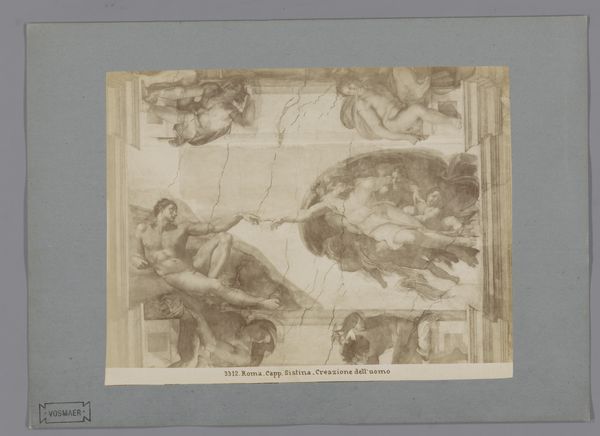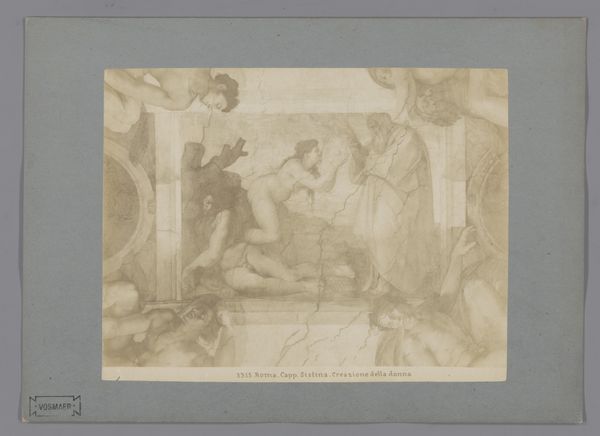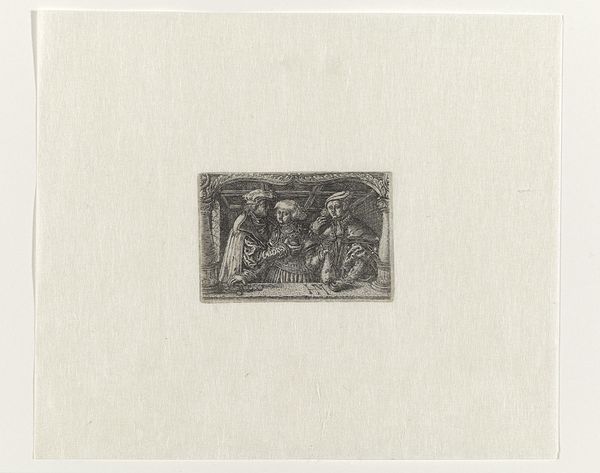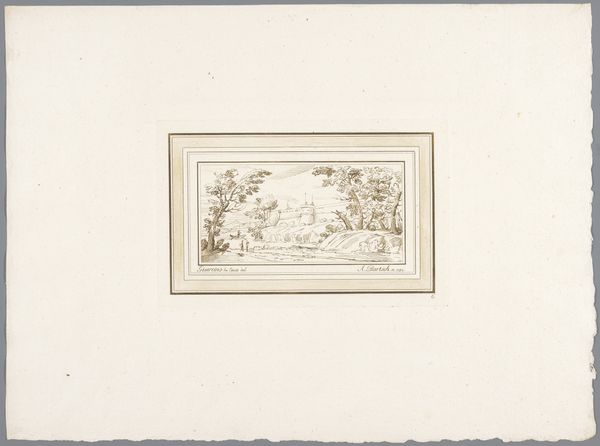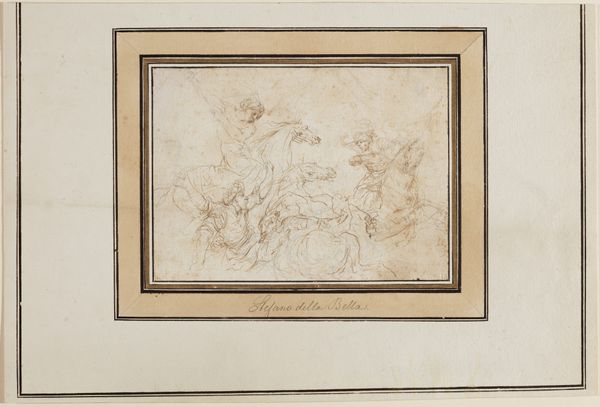
Fotoreproductie van het schilderij Le Conseguenze della Guerra door Peter Paul Rubens in de Galleria Palatina te Florence, Italië 1857 - 1900
0:00
0:00
fratellialinari
Rijksmuseum
Dimensions: height 170 mm, width 247 mm, height 258 mm, width 358 mm
Copyright: Rijks Museum: Open Domain
Curator: Oh, wow, it’s a kind of ethereal chaos, isn't it? A swirl of bodies and smoke—or is it clouds? Hard to tell! It's unsettlingly beautiful in its mess. Editor: Indeed. What we’re looking at is a gelatin silver print from between 1857 and 1900 by Fratelli Alinari. This particular print serves as a photographic reproduction of Peter Paul Rubens' painting "The Consequences of War," originally housed in the Galleria Palatina in Florence, Italy. Curator: Ah, Rubens, of course! That explains the dynamism—the sheer theatricality of it all. So, this is like… a copy of a copy? A shadow of a painting? It makes you think about originality, doesn't it? And why bother making a print in the first place, of something that exists? Editor: Precisely. The act of reproducing, especially in the 19th century, had several functions. Firstly, dissemination; allowing a broader audience to engage with masterpieces that were geographically inaccessible. Secondly, it offered a form of documentation and preservation of artworks through a rapidly evolving technology of photography. Notice the arrangement of the figures. Rubens employs a dynamic diagonal composition that accentuates the violence and unrest. This reproduction attempts to retain these structural qualities. Curator: I can almost hear the screams just looking at this…reproduction. It's curious how the desaturated tones sort of mute the drama but simultaneously gives it a ghostly presence. I see Mars marching forward but the scene is consumed by terrified allegorical figures—it definitely conveys how war impacts all facets of human existence. Is that Venus attempting to restrain him in the center? It is still an odd choice of art to reproduce in print, though! Who would display this above their fireplace? Editor: Absolutely, that's Venus. The central figures' entanglement invites contemplation on the interplay between love and conflict. Now, you pose a critical question about display, one could analyze this phenomenon from the framework outlined by Walter Benjamin regarding aura, the essence of a work being lost or transformed through mechanical reproduction. However, the availability and affordability of art exponentially expands... Curator: So even if the magic is diluted in reproduction, at least more people get a taste of the enchantment! Editor: A fitting way to frame it. The silver gelatin print serves as both echo and invitation. Curator: Makes you ponder how art morphs across time, doesn’t it? From paint to photograph, forever changing, yet hopefully holding on to a bit of that initial spark.
Comments
No comments
Be the first to comment and join the conversation on the ultimate creative platform.
